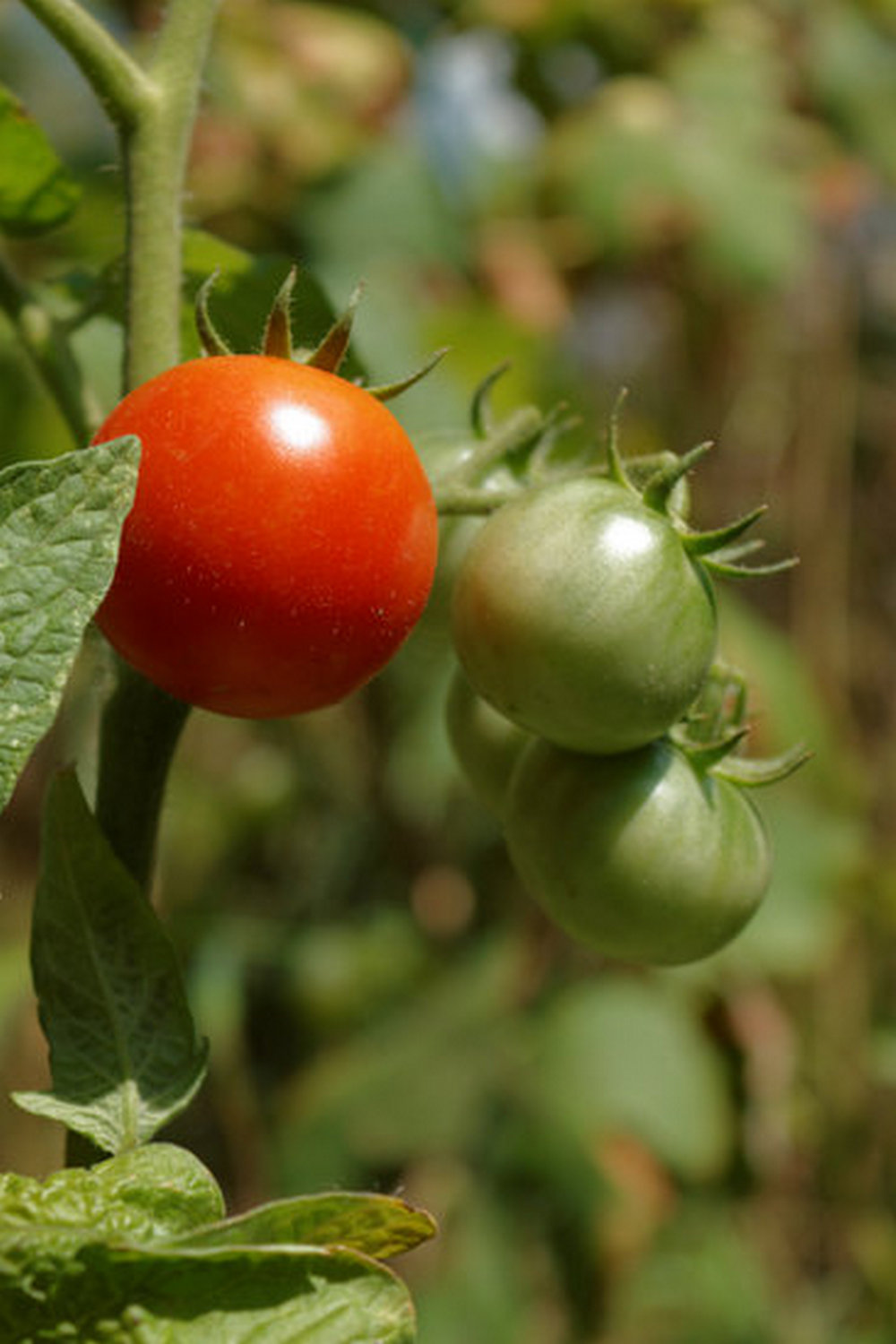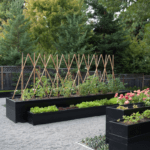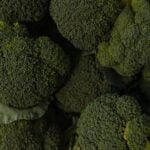Nestled in the breathtaking landscapes of Colorado, high altitude vegetable gardening presents a unique set of challenges and opportunities for gardeners. Understanding the specific conditions of high altitudes is crucial for successful gardening in this region. From reduced pests to increased sunshine and cooler temperatures, there are numerous benefits to growing vegetables at higher elevations in Colorado.
Selecting the right vegetables is essential for thriving in high altitude environments. Certain varieties are better suited for the challenges posed by altitude and climate variations. By choosing the appropriate vegetables and following expert advice on planting techniques, individuals can set themselves up for a successful harvest. Additionally, proper soil preparation plays a key role in ensuring that plants receive the necessary nutrients to grow and produce bountiful crops at high altitudes.
With careful planning and attention to detail, high altitude vegetable gardening in Colorado can yield delicious results. From managing temperature fluctuations to efficient irrigation practices, gardeners can navigate the unique conditions of high altitudes with confidence. By incorporating natural pest control methods and strategic harvesting techniques, individuals can enjoy fresh, flavorful vegetables that thrive in the picturesque mountainous regions of Colorado.
Benefits of High Altitude Vegetable Gardening
High Altitude Vegetable Gardening in Colorado offers a unique set of benefits that can make the gardening experience rewarding and successful. One of the primary advantages of growing vegetables at higher altitudes is the reduced presence of pests. Insects and other garden nuisances tend to be less prevalent in elevated areas, allowing for healthier plants with less damage from infestations.
Additionally, high altitude vegetable gardening in Colorado benefits from increased sunshine exposure. With fewer obstructions like buildings or trees blocking the sun’s rays, plants receive ample sunlight, promoting better growth and development.
Moreover, another advantage of high altitude vegetable gardening in Colorado is the cooler temperatures that these regions typically experience. While extreme cold can also pose challenges, moderate temperatures provide an ideal environment for many vegetables to thrive.
Cooler weather can help extend the growing season for certain crops, allowing you to harvest fresh produce well into the fall months. Additionally, these lower temperatures can also contribute to improved flavor and texture in certain vegetables, making them even more enjoyable to harvest and consume.
When planning your high altitude vegetable garden in Colorado, it is essential to consider these benefits and tailor your plant selection accordingly. By understanding how reduced pests, increased sunshine, and cooler temperatures can work in your favor, you can make strategic choices that will lead to a successful gardening experience. With care and attention to these unique advantages of high altitude vegetable gardening in Colorado, you can create a thriving garden with bountiful harvests throughout the growing season.
Choosing the Right Vegetables
When it comes to high altitude vegetable gardening in Colorado, choosing the right vegetables is crucial for a successful harvest. Not all vegetables thrive in the unique conditions of high altitudes, so selecting varieties that are well-suited to these environments is essential. Here are some vegetables that are known to do well in high altitude vegetable gardening in Colorado:
- Carrots – Known for their ability to grow deep into the soil, carrots are a great choice for high altitude gardening.
- Radishes – Quick-growing and low-maintenance, radishes are excellent for beginners in high altitude gardening.
- Leafy greens like lettuce, spinach, and kale – These vegetables prefer cooler temperatures and can withstand the climate challenges of high altitudes.
When choosing vegetables for your high altitude garden, consider not only the type of vegetable but also the specific variety. Some varieties have been specially bred to thrive in challenging conditions like high altitudes. Additionally, pay attention to your specific altitude and climate when selecting vegetables, as certain varieties may perform better at different elevations within Colorado.
In order to ensure a successful high altitude vegetable garden in Colorado, it is important to choose vegetables that are well-suited to the unique challenges of gardening at higher elevations. By selecting the right vegetables and varieties for your specific location, you can set yourself up for a bountiful harvest despite the potential obstacles posed by high altitudes.
Soil Preparation
One important aspect of soil preparation for high altitude vegetable gardening is testing and amending the soil. Conducting a soil test can provide valuable information about the pH levels and nutrient content of your soil.
Based on the results, you may need to add organic matter, such as compost or aged manure, to improve the soil structure and fertility. Adding organic matter not only improves nutrient levels but also helps retain moisture in the soil, which is essential in high altitude gardening.
In addition to adding organic matter, incorporating a balanced fertilizer specifically formulated for vegetables can help provide additional nutrients that may be lacking in high altitude soils. It’s important to follow recommended guidelines for fertilization to avoid over-fertilizing, which can be harmful to plants. By taking the time to properly prepare your soil before planting, you are setting a strong foundation for a successful high altitude vegetable garden in Colorado.
| Aspect of Soil Preparation | Importance |
|---|---|
| Testing and amending | Provides information on pH levels and nutrients; improves soil structure and fertility. |
| Adding organic matter | Helps retain moisture; enhances nutrient levels. |
| Using balanced fertilizer | Adds necessary nutrients; prevents over-fertilizing. |
Planting Tips
Timing and Spacing
When it comes to planting vegetables in high altitude regions like Colorado, timing is crucial. Due to the shorter growing season and the risk of frost even in the summer months, it’s essential to start planting as soon as the soil is workable.
Additionally, spacing is important to allow proper airflow between plants and prevent overcrowding, which can lead to disease and pest issues. Be sure to follow spacing recommendations on seed packets or plant labels for each vegetable variety.
Care Instructions
Proper care of your vegetable plants throughout their growth cycle is vital for a successful harvest at high altitudes. Regular watering, especially during hot and dry periods, is necessary to ensure healthy growth. Consider using mulch around plants to help retain moisture in the soil and prevent water evaporation. Providing support for vining plants like tomatoes or cucumbers can also help them thrive in windy conditions common at high altitudes.
Temperature Management
In high altitude areas like Colorado, temperature fluctuations can be drastic, with warm days often followed by chilly nights. To protect your vegetable plants from these changes, consider using row covers or cold frames early in the season to create a warmer microclimate for young seedlings. Likewise, be prepared to cover delicate plants if a late spring frost threatens your garden.
Monitoring weather forecasts regularly can help you stay ahead of any sudden temperature drops that could harm your plants. Adjusting planting dates or using season extenders like hoop houses can also lengthen your growing season despite challenging weather conditions. Stay proactive and attentive to temperature changes to ensure a successful harvest of vegetables in your high altitude garden.Colorado.
Watering and Irrigation
High altitude vegetable gardening in Colorado presents unique challenges, particularly when it comes to watering and irrigation. Due to the high elevation and potentially dry climate of Colorado, it is crucial for gardeners to implement efficient and effective watering practices to ensure the health and growth of their vegetable plants. Here are some tips for successful watering and irrigation in high altitude vegetable gardening:
- Monitor soil moisture levels regularly: The dry air and rapid drainage at higher altitudes can lead to soil drying out quickly. It is essential to consistently check the moisture levels of the soil to avoid under or overwatering your vegetable plants.
- Implement drip irrigation systems: Drip irrigation is a great way to deliver water directly to the roots of your plants, minimizing water waste through evaporation or runoff. This method also helps in reducing weed growth and keeps foliage dry, lessening the chance of disease.
- Consider mulching: Mulching around your vegetable plants not only helps retain soil moisture but also regulates soil temperature, which is beneficial in high altitude gardening where temperatures fluctuate often. Organic mulches like straw, leaves, or wood chips can be used to cover the soil surface.
In addition to these tips, gardeners should also be mindful of the quality of water used for irrigation. At high altitudes, water sources may contain higher levels of minerals or salts, which can impact plant health.
Testing your water source and using appropriate filtration or treatment methods if necessary can help mitigate any negative effects on your vegetable garden. By paying attention to proper watering techniques and utilizing suitable irrigation methods, high altitude Vegetable Gardening in Colorado can be successful despite its challenges.
Pest and Disease Management
When it comes to high altitude vegetable gardening in Colorado, pest and disease management is a crucial aspect that gardeners need to be aware of. The unique environment of high altitudes can attract certain pests and diseases that may not be as prevalent in lower elevation areas. However, by implementing natural and organic methods, gardeners can effectively prevent and control these issues without the use of harmful chemicals.
One common pest that gardeners may encounter in high altitude vegetable gardens in Colorado is the Colorado potato beetle. These pests can quickly decimate potato plants if left unchecked. To manage this pest, consider planting resistant potato varieties, using row covers to protect plants, and handpicking any beetles found on the foliage. Additionally, beneficial insects like ladybugs can help keep these pests under control naturally.
In terms of diseases, powdery mildew is a common problem for many vegetable plants grown at high altitudes. This fungal disease thrives in cooler temperatures and can affect crops like squash, cucumbers, and melons. To prevent powdery mildew, ensure proper air circulation between plants by spacing them appropriately.
Additionally, avoid overhead watering which can create humid conditions ideal for fungal growth. If symptoms do appear, consider using organic fungicides like neem oil or sulfur to combat the disease while minimizing harm to beneficial insects and wildlife in your garden. By staying vigilant and proactive in pest and disease management practices, gardeners can successfully grow healthy vegetables at high altitudes in Colorado.
Harvesting and Storage
High altitude vegetable gardening in Colorado not only presents unique challenges but also offers some distinct benefits. One of the most rewarding aspects of this type of gardening is the opportunity to harvest fresh, flavorful vegetables that have been grown in optimal conditions. When it comes to harvesting your crops, timing is crucial.
Vegetables should be harvested when they are at their peak ripeness to ensure the best flavor and nutritional value. Additionally, proper storage techniques can help extend the shelf life of your harvest.
A variety of vegetables thrive in high altitude settings in Colorado, including hearty greens like kale and Swiss chard, root vegetables such as carrots and beets, as well as cold-tolerant crops like broccoli and Brussels sprouts. It’s essential to pay attention to the specific needs of each type of vegetable when it comes time for harvesting.
For example, leafy greens should be harvested frequently to encourage new growth, while root vegetables can be left in the ground until needed.
Storing your harvested vegetables properly is key to preserving their freshness and taste. Some vegetables, like potatoes and winter squash, do well when stored in a cool, dark place with good air circulation. On the other hand, tomatoes and peppers are best stored at room temperature to prevent them from losing flavor and texture. By following these guidelines for harvesting and storage, you can enjoy the fruits of your labor well beyond the growing season.
| Vegetable | Storage Recommendations |
|---|---|
| Potatoes | Store in a cool, dark place with good air circulation |
| Tomatoes | Best stored at room temperature to retain flavor |
Conclusion
In conclusion, high altitude vegetable gardening in Colorado presents a unique set of challenges and opportunities for gardeners looking to cultivate their own fresh produce. Despite the harsher conditions, there are numerous benefits to growing vegetables at high altitudes, including reduced pest pressures, increased sunshine exposure, and cooler temperatures. By understanding the specific needs of plants at higher elevations, gardeners can optimize their efforts and enjoy a successful harvest.
Choosing the right vegetables is crucial for a thriving high altitude vegetable garden in Colorado. It is essential to select varieties that are well-suited to your specific altitude and climate conditions. Proper soil preparation is also key to ensuring healthy plant growth. By improving soil quality and nutrient levels, gardeners can provide a strong foundation for their vegetable plants to flourish.
As you embark on your high altitude vegetable gardening journey in Colorado, remember to pay attention to planting tips, watering techniques, pest management strategies, and proper harvesting and storage practices. By following these guidelines and staying attentive to the needs of your plants, you can overcome the challenges of gardening at high altitudes and enjoy a bountiful harvest of fresh vegetables throughout the growing season.
So roll up your sleeves, grab your gardening tools, and start cultivating your own high altitude vegetable garden in Colorado today.
Frequently Asked Questions
What Vegetables Can You Grow in High Altitude?
Vegetables that can thrive in high altitudes include root vegetables like carrots, potatoes, and beets, as well as leafy greens such as spinach and kale. Crops like peas, broccoli, and cauliflower also do well in cooler mountain climates.
Which Vegetation Grows Well at Higher Elevations?
Vegetation that flourishes at higher elevations typically includes hardy crops like Swiss chard, Brussels sprouts, and lettuce. Root vegetables like radishes and turnips are also known to grow successfully in mountain regions due to their adaptability to cooler temperatures.
What Vegetables Do Well in Colorado?
Colorado’s climate is ideal for growing a variety of vegetables such as tomatoes, peppers, zucchini, and squash. Additionally, cold-hardy crops like kale, cabbage, and onions thrive in the state’s diverse weather conditions.
Carrots, beets, and potatoes are also popular choices for Colorado gardeners due to their ability to withstand the colder temperatures found in certain regions of the state.

If you’re looking to get into vegetable gardening, or are just looking for some tips on how to make your current garden better, then you’ve come to the right place! My name is Ethel and I have been gardening for years. In this blog, I’m going to share with you some of my best tips on how to create a successful vegetable garden.





